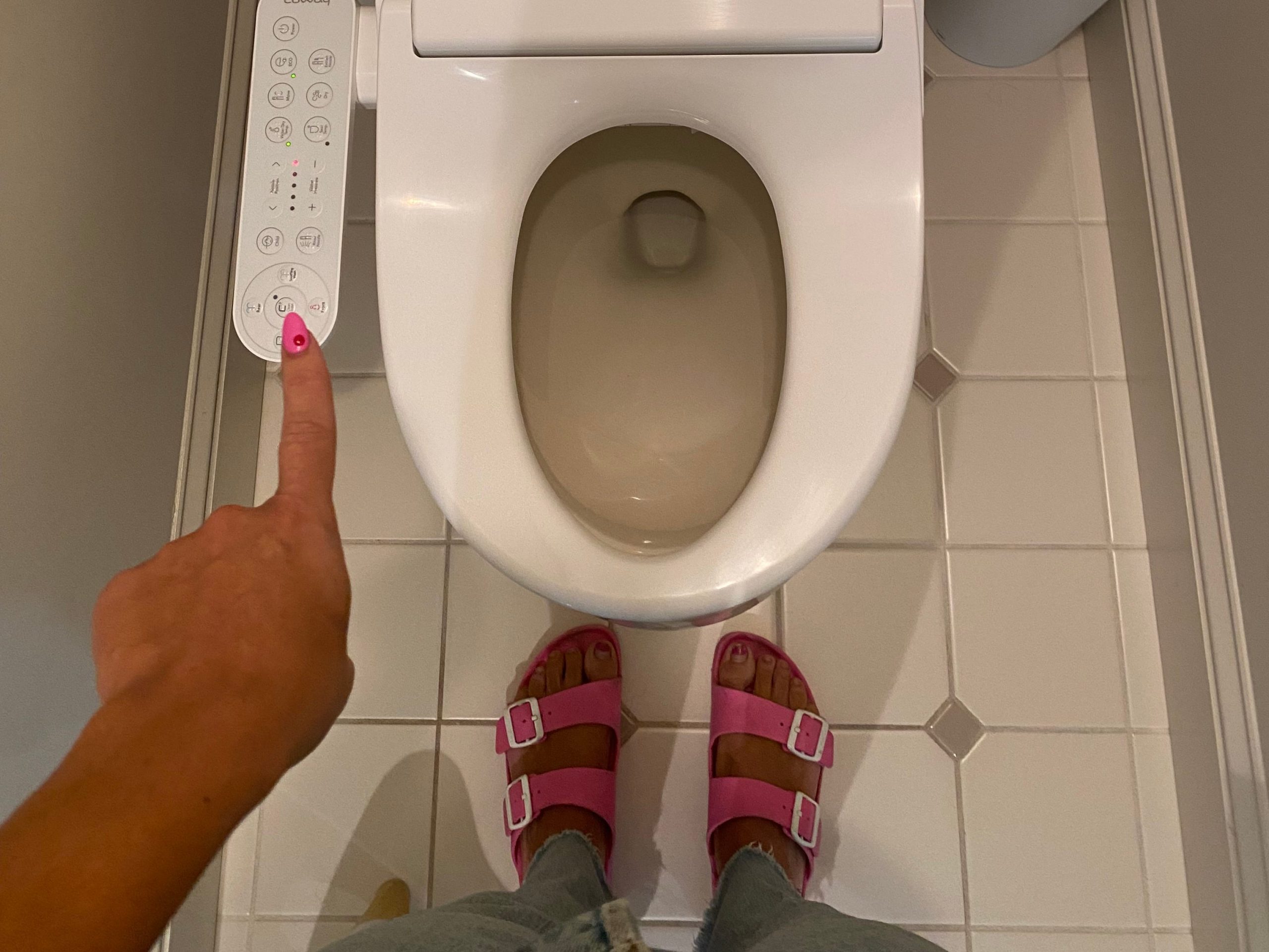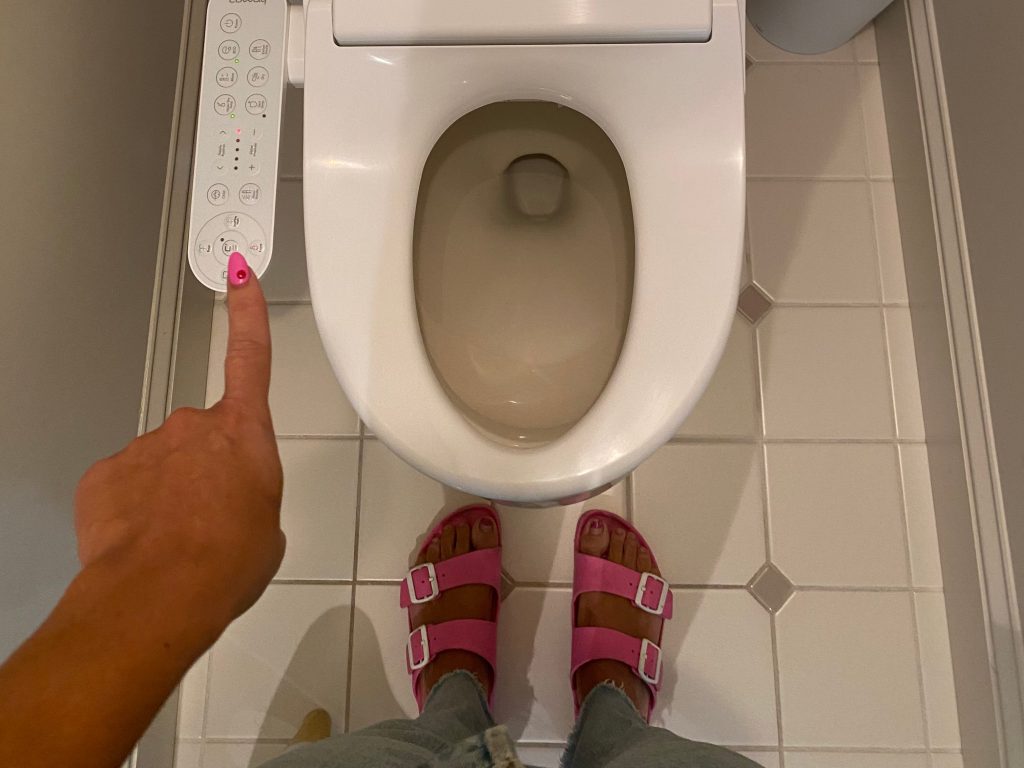
Courtesy of Conz Preti
- We installed our bidet during the toilet-paper shortage at the beginning of the pandemic.
- Having a bidet cut the amount of money we spent on toilet paper, which was significant.
- As someone with a vagina, I still rely on toilet paper to clean myself.
- Visit Insider's homepage for more stories.
I wasn't even two weeks postpartum with twins when the looming pandemic sent everyone into toilet-paper-hoarding mode. I sent my husband in search of the basic things we needed: formula, wipes, diapers, canned food, and toilet paper. He was able to find everything except the last item.
Then I remembered that we got a bidet for my postpartum recovery.
We'd delayed installing the bidet because both my husband and I were a little intimidated by the process. Given that we couldn't find toilet paper anywhere and it was obvious that the pandemic was here to stay, it was time.
Once we made the switch, we saw what we were missing out on: cleaner butts, saving money, and significantly less waste. We also realized that relying solely on toilet paper was archaic and gross.
Installing the bidet was pretty straightforward
People often assume that installing a bidet is complicated because you have to hook up the water tank to the seat. My husband, who is always fixing things around the house, installed it in 30 minutes.
Ours needed an electrical plug next to it. Most models don't require that and have easy-to-follow instructions. You just plop the seat where the previous seat sat, hook the bidet to the water tank, and you're done.
Learning to use a bidet was intimidating at first
I grew up in South America, so I was used to having both a bidet and a toilet in the bathroom. But I'd never actually used bidets for their intended use of butt-cleaning. Instead, I'd use them after summer concerts to wash my mud-caked feet.
The first time I used the bidet my husband installed, I was intimidated. Water squirting on your butt is not a sensation most people are used to. I had to learn where to position myself, the water pressure I was comfortable with, how long I needed to use it to be clean, and whether I liked the air-drying option.
It's been almost two years since we installed our first bidet, and we now have a second one in our guest bathroom. My husband doesn't use toilet paper anymore. He loves bidets so much that he's persuaded at least four of his close friends to get one.
I'm a partial convert since I still use toilet paper when I pee.
The biggest plot twist is that our toddler loves the bidet. Cleaning a toddler's butt after they've pooped is difficult and messy, and using the bidet has made toilet time much easier.
There are obvious benefits to using a bidet
When I was pregnant with the twins, everyone warned me about hemorrhoids, which triggered my purchase of the bidet in the first place.
Bidets are an excellent alternative for people with hemorrhoids. Wiping an irritated anus is not for the faint of heart, and washing it with lukewarm water is much more comfortable.
Even for those who don't have hemorrhoids, using a bidet feels like a nice, gentle tickle. When compared to toilet paper, the water from a bidet is a far more enjoyable sensation.
Bidets also have a smaller environmental effect than toilet paper. As Insider has reported, a bidet uses about one-eighth of a gallon of water, compared to about 37 gallons of water to make a roll of toilet paper. Switching to a bidet would also save some of the 384 trees used to make a person's lifetime toilet-paper supply.
Reducing the amount of toilet paper we used at home also had a huge effect on our pockets. As a family of five, we didn't realize how much money we were spending on toilet paper until we installed the bidet.
Even though I grew up with full access to bidets, it took a pandemic, a toilet-paper shortage, and an enthusiastic American husband to make the switch. But not seeing poopy toilet paper in my hand is something that I enjoy a lot.
